A Plan to Avoid Extinctions
Air Date: Week of January 24, 2020
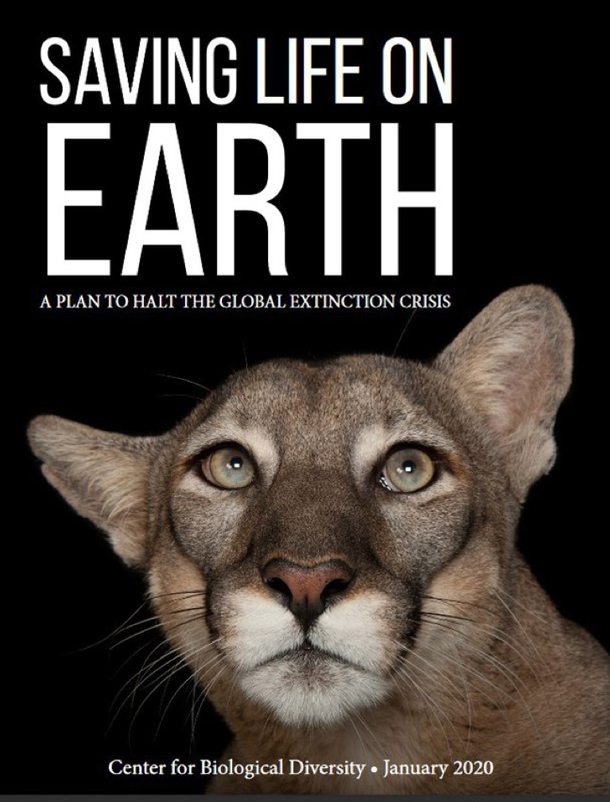
The Center for Biological Diversity is calling for expanded public lands and additional protection for endangered species (Photo: Courtesy of the Center for Biological Diversity)
A recent United Nations biodiversity report comes to the sobering conclusion that as many as 1 million species are at risk of going extinct in the coming decades. In response the UN Convention on Biodiversity has released a new plan to avert the crisis. Tierra Curry from the Center for Biological Diversity joins Host Bobby Bascomb to discuss the biodiversity crisis and plans to address it.
Transcript
BASCOMB: It’s Living on Earth, I’m Bobby Bascomb. A recent United Nations Biodiversity report comes to the sobering conclusion that as many as 1 million species are at risk of going extinct in the coming decades, as we witness the 6th mass extinction on planet earth. The report found that humans are responsible for extinction rates that are up to 1000 times greater than what would be expected without us. As species disappear before our eyes the United Nations and the Center for Biological Diversity have released plans which address both the extinction crisis and climate change. For more, I’m joined now by Tierra Curry. She’s is a Senior Scientist at the Center for Biological Diversity. Tierra, welcome back to Living on Earth.
CURRY: Thanks so much Bobby. I'm always happy to be here.
BASCOMB: Oh, we're always so happy to have you. So this UN report says that we're in the midst of the sixth mass extinction that the earth has experienced, the first one caused by humans. Can you give me some examples of animals that are staring down at extinction in the coming decades?
CURRY: Basically, all groups are at risk now, birds, insects, amphibians, reptiles, mammals, coral reefs, there isn't a single taxa that isn't at risk from this extinction crisis. Even common species, vertebrate populations are plummeting around the globe, we've killed off like more than half of all vertebrate populations in the last 40 years and insect scientists estimate that between 10 and 40% of insect species are at risk of extinction. And here in North America, the most imperiled group of organisms is freshwater mollusk, we've already lost more than 70 freshwater snails to extinction, and more than 25 freshwater mussels and 70% of the remaining ones are at risk. But across the globe. There's so many issues now; Exploitation, I mean, we could lose elephants in a couple generations, there is a beautiful little porpoise in the Gulf of California called the Vaquita, and it's like a tiny dolphin, and there's less than 10 of them left. And so across the globe, there's species people have never heard of, and species that are gorgeous, and that everybody loves, like elephants and giraffes and vaquitas that are at risk of extinction.
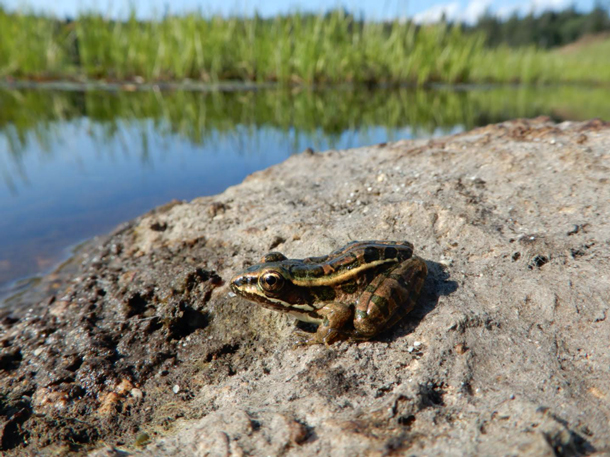
Amphibian species such as this Northern Leopard Frog are sensitive to habitat destruction and toxic chemicals in freshwater systems (Photo: Isaac Merson)
BASCOMB: Now, I understand that a lot of the extinctions are happening in the ocean, and it's largely going unseen, because you know, people don't live there so much. Can you tell me a bit more about the things there that are concerning you?
CURRY: Sure. So the ocean has done humanity a really big favor in that it has absorbed a ton of carbon dioxide, which is good for us, but it has caused the ocean to acidify. So here in Oregon, where I live, baby oysters are having trouble growing shells because the ocean has become so acidic and coral reefs which support so much of marine life, so many different species of marine life have some part of their life cycle on coral reefs, are at risk so much so that some scientists estimate that we can lose all of them if we don't get a handle on ocean acidification. And then there's just overfishing. A very small percentage of all species are harvested sustainably. So that's still a big problem that all countries need to address. And then there's plastic, which causes trouble everywhere. Even if it's intended to be recycled, a lot of it ends up in the ocean. And then sea turtles and sea birds eat it, which is terrible. And oh my gosh, this list could go on for way too long. But then there's rising sea level, which is going to inundate coastal marshes, which also support a lot of species that are very important.
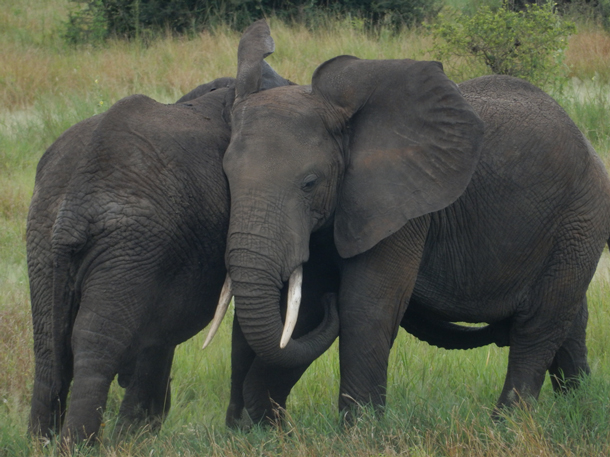
African Elephants greeting one another in northern Tanzania. Elephants face severe threats of exploitation from the ivory trade. (Photo: Isaac Merson)
BASCOMB: Gosh, the list does go on. Well, let's talk a bit about what the UN is proposing to address this problem. They're planning to bring it up in China in October this year, what are the goals of the UN plan?
CURRY: So the overall gist of the plan is no more net loss of habitat, marine or terrestrial, by 2030. And then to set aside half of the earth as protected by 2050. Right now, only 15% of land is protected and only 6% of the oceans are protected. So, scientists kind of agree that if we can get 30% protected by 2030 and 50%, by 2050, we'll have a chance at surviving
BASCOMB: A chance. That doesn't sound too encouraging.
CURRY: I mean you got to start swinging your hammer somewhere.
BASCOMB: Well, I mean, 50% of the of the land by 2050. Sounds ambitious, how likely is it that that's going to actually get anywhere? I understand back in 2010, there was a similar goal established by the UN and that didn't really get too far either. What is the real hope of this being accomplished?
CURRY: Well, the goal of the previous goals haven't been met. And that's why I think that by 2030, they're calling for no net loss, that we at least stabilize the baseline where we are now and I think that it's really going to take a ground shift of people, not just you know, carrying their own water bottle and changing their light bulb but really putting pressure on their governments to protect wildlife because wildlife are so important not just for the ecosystem services they provide, like cleaning the water, stabilizing the soil, pollinating your crops. But wildlife are part of who we are, they're part of our stories, our language or culture, almost everyone loves wildlife. And so, we need to protect it for ecosystem services, but also for our own well being. And if we can get people to connect to that and to realize there is a problem, I think people around the globe will put pressure on their governments to step up wildlife protection, especially as things get so bad that everybody notices. Like, I think almost everybody's noticing. When's the last time you saw a Firefly? When's the last time you saw a monarch butterfly? When's the last time you saw a bat? Like, last summer when I went out night after night, I bought this bat detector that tells you you just plug it into your iPhone and it tells you what species of bat you're hearing. And I was so excited about it. And I went out like 10 nights and I didn't see a single bat and my heart was just crushed out. And I think that that's becoming a more common experience. And we don't want to be the generation that lets the monarch butterfly go extinct. We don't want to be the generation that lets swamps become empty of frogs, like kids have the right to hear those frogs singing and to chase monarch butterflies. But I think as more people become aware of these things, they're going to be like, Yes, I want I want to see a frog. I want my kid to see a frog. I grew up with these things. I haven't seen a frog in forever.
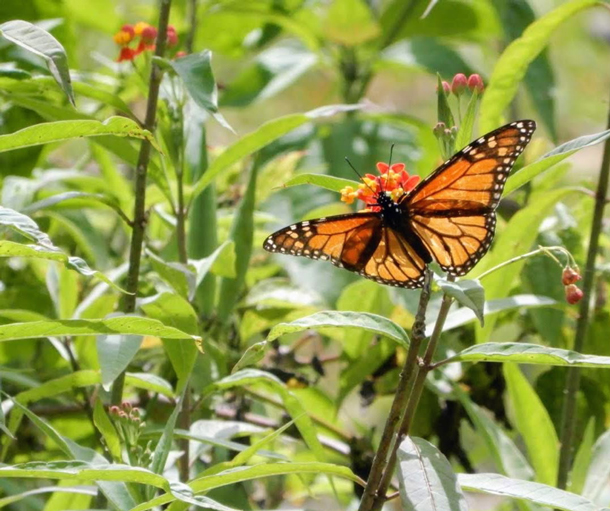
Common and iconic species like the Monarch Butterfly are facing severe population crashes. (Photo: Isaac Merson)
BASCOMB: Well, that's the thing I think that's so shocking about it is that in one lifetime, and you're not that old, and you remember when there were bats, and now there aren't bats. I mean, it's just so fast, the pace at which things are disappearing.
CURRY: It is fast. And I mean, the good news is, for the most part, we know what's causing a lot of these things: habitat destruction, exploitation, pesticides, the revolving door between the pesticide companies and the Environmental Protection Agency. So once we identify what's causing a problem, if we can put enough pressure on our governments then then we can address that. And so I am hopeful. I know how bad things are because I think about extinction every day, like it's literally my job to follow extinction. And but that also causes me to think about how can I get more people on board? How can we effectively pressure the government? We've got this plan, we're going to follow all of the presidential candidates around in a polar bear costume, and try to get them to take a position on the extinction crisis.
BASCOMB: Now I understand your organization, the Center for Biological Diversity has released your own plan in addition to the polar bear plan, but it's called Saving Life on Earth. Can you tell me about that? What are you calling for?
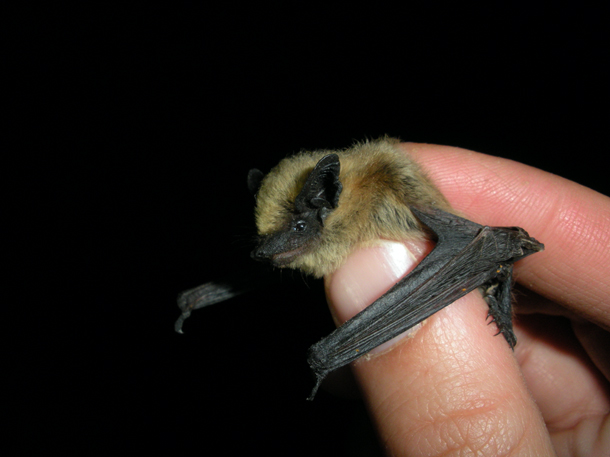
Many species such as bats and insect-feeding birds are struggling to survive in altered landscapes (Photo: ErinAdventure on Flickr, CC BY-NC-ND 2.0)
CURRY: We want the US government to declare the extinction crisis, a national emergency, because that would allocate resources to address it and it would also raise awareness and get more people involved. Here in the US we're pushing for the quote unquote, protected lands now that are used for other purposes to get actual protections, which right now under the multi-use mandate, public lands that are allegedly protected are used for fossil fuel drilling, for logging, for grazing and we want the United States government to prioritize biodiversity protection and carbon sequestration and recreation on those protected areas and to protect even more areas. We want the Endangered Species Act to be restored to its full strength and all of the imperiled species that aren't yet protected to be protected, and we want imperiled species to get protected before they crash.
BASCOMB: Mm-hmm.
CURRY: We're calling for the Environmental Protection Agency to adopt the precautionary principle and to adequately protect us from pesticides and other toxics, to move away from plastic entirely, to move towards plant-based plastics and to recycle all plastics so that more plastic isn't entering the ocean. And in our freshwater right now, plastic pollution is dumped into rivers and streams. And that's ridiculous. So there's things like that that just have to stop. And then we're calling for the designation and protection of more wildlife corridors and at least 1000 more wildlife underpasses and overpasses so that populations can be connected and can migrate. And these are actually already happening in a lot of places like outside Seattle on Interstate 90 the Snoqualmie Pass they've built these amazing wildlife underpasses and overpasses that are vegetated and they are tall enough that elk and bear are moving through them. But they're also building habitat for smaller species like amphibians and snakes, which is amazing. So those are things that states can help with that communities can wrap their minds around, like how do we create an overpass in my community? How do we get this park to go pesticide free, like everyone can get involved in this at some level, we have to address this extinction crisis because not just the wellbeing of wildlife depends on it. But our well being depends on our actually protecting the planet. It's kind of like back in the 70s when rivers were catching on fire, and the Clean Water Act was passed. We're kind of at that pivotal moment again. Things are really bad and we really have to take national level action all the way down to local action and individual lifestyle action to protect them.
BASCOMB: Well, climate change and biodiversity loss are two, just huge problems and very distinct, but they're also very related and interconnected. Can you talk a bit about that? How is climate change affecting the loss of biodiversity and the loss of biodiversity may be exacerbating climate change?
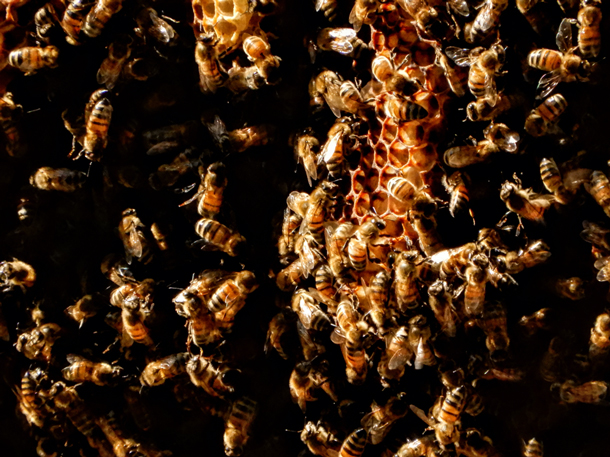
Widespread pesticide use, habitat loss, and climate change are some of the most significant drivers of the decline of flying insect populations. (Photo: Isaac Merson)
CURRY: For sure. You know, for 12 years now, I've been trying to get protection for endangered species. And when I started this job, I actually worked on some species that climate change wasn't identified as the primary threat for. It was like old fashioned threats like logging and mines. And now I can't even think of a species that isn't threatened by climate change. That's how bad that problem has become. But by protecting species, we can, and the habitat they need. We can also address climate change. Like, the Northern Spotted Owl in the Pacific Northwest, when it was protected, and they set aside some habitat for it that sequestered a ton of carbon in the form of old growth forests but even other ecosystems that people don't think about storing a lot of carbon when scientists look at it, they do. Like the Mojave Desert. If we protect the tortoises that live there, desert plants are incredibly efficient at sucking carbon out of the atmosphere and storing it in the desert soils and prairies, like prairies have like 15 feet of healthy soil and root system. So protecting little endangered species like the Dakota Skipper butterfly, if we really protect its habitat, that habitat is going to sequester carbon. So if you add up all of those places from all around the country, protecting habitat for endangered species will help us fight the global climate emergency.
BASCOMB: Wow, that's really fascinating to think about how interconnected everything is and how it's really, you know, the chicken and the egg, so dependent on each other.
CURRY: For sure. And if we succeed in protecting 30% of lands in the next decade, and 50% by 2050, all of that protected land is really going to help stabilize the climate. So it's a win-win. We get to stay on the planet more wildlife gets to stay on planet.
BASCOMB: Tierra Curry is a Senior Scientist at the Center for Biological Diversity. Tierra, thanks so much for your time today.
CURRY: Thanks so much Bobby.
Links
Inside Climate News | “UN Proposes Protecting 30% of Earth to Slow Extinctions and Climate Change”
Read more about the Center for Biological Diversity’s “Saving Life on Earth”
Living on Earth wants to hear from you!
Living on Earth
62 Calef Highway, Suite 212
Lee, NH 03861
Telephone: 617-287-4121
E-mail: comments@loe.org
Newsletter [Click here]
Donate to Living on Earth!
Living on Earth is an independent media program and relies entirely on contributions from listeners and institutions supporting public service. Please donate now to preserve an independent environmental voice.
NewsletterLiving on Earth offers a weekly delivery of the show's rundown to your mailbox. Sign up for our newsletter today!
 Sailors For The Sea: Be the change you want to sea.
Sailors For The Sea: Be the change you want to sea.
 The Grantham Foundation for the Protection of the Environment: Committed to protecting and improving the health of the global environment.
The Grantham Foundation for the Protection of the Environment: Committed to protecting and improving the health of the global environment.
 Contribute to Living on Earth and receive, as our gift to you, an archival print of one of Mark Seth Lender's extraordinary wildlife photographs. Follow the link to see Mark's current collection of photographs.
Contribute to Living on Earth and receive, as our gift to you, an archival print of one of Mark Seth Lender's extraordinary wildlife photographs. Follow the link to see Mark's current collection of photographs.
 Buy a signed copy of Mark Seth Lender's book Smeagull the Seagull & support Living on Earth
Buy a signed copy of Mark Seth Lender's book Smeagull the Seagull & support Living on Earth

